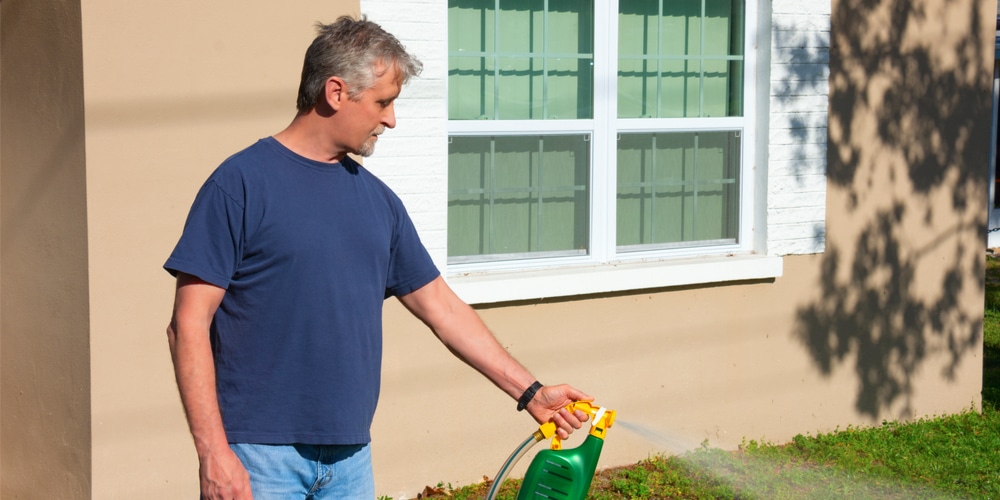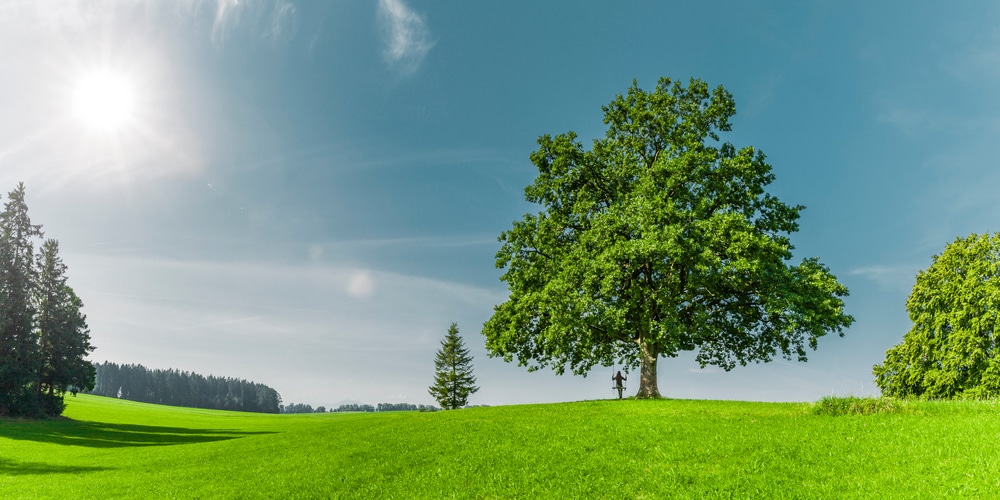Bees are an essential part of the ecosystem as they pollinate plants and flowers, which provide oxygen. If bees were to die out, the world would end within four years. More and more homeowners are becoming aware of the effect pesticides, herbicides, and fertilizers are having on the environment.
It’s estimated that around 27 million pounds of weed and feed are applied to parks, school playing fields, cemeteries, and lawns across America annually. Chemical gardening products contain toxic substances which can kill bees and other beneficial insects, get into the waterways and contaminate the environment.
If you’re looking to become more ecologically aware, you may like to choose organic products when it comes to lawn care. Let’s look at what weed and feed is and how it affects the environment. We’ll also answer the question, ‘Does weed and feed kill bees?’
What is weed and feed?
Weed and feed products generally comprise three types of herbicides; 2,4-D, dicamba, and mecoprop, which are blended together to make a weed killer that will kill weeds such as dandelions but won’t affect the grass. The product also includes fertilizers that help feed the grass.
Weed and feed is very convenient as it kills weeds and feeds the grass in the same application and is the most popular and most frequently used lawn care product on the market. It is very effective in the short-term but can have devastating effects on the environment and soil health if used long-term.
Weed and feed products come in either granular or liquid form and is applied to the whole lawn. This is often unnecessary as fertilizer is needed for the entire lawn, but herbicides are only required in certain places. The use of weed and feed adds between 20 to 30 times more chemicals to the ground than is needed, which is damaging to the environment. The long-term health of your lawn may also be compromised by using weed and feed.
You May Also Be Interested In: Weeds that Look Like Grass
Weed ‘n feed kills bees
Weed and feed products often end up being washed off your lawn during watering or after it rains. Pesticides will then get into streams and lakes, seep into the water table, kill fish, and eventually end up in the ocean.
Bees and flying insects that visit flowers will be affected by herbicides and pesticides sprayed on weeds with flowers. Bees feed on the flower’s pollen, and if this has been coated with weed and feed solution, the bee will also be consuming toxins. This can contribute to a decrease in bee numbers.
Birds also suffer from problems due to weed and feed as they often eat the granules, which can result in death. The government has recently called for the removal of the most toxic ingredients from the market to help protect the environment, including bees, birds, and fish. Too much weed and feed can even kill your grass.
Weed and feed alternatives
You can grow a lovely, healthy lawn without using chemical fertilizers and herbicides such as weed and feed. It’s best to use organic fertilizers and get rid of weeds naturally. If you care for your lawn correctly, it will be dense and choke out weeds. Ensure that you feed your lawn and aerate, water, and mow it at the correct times so that it grows green and healthily. Rather than applying weed killer to the whole lawn, you can ‘spot treating’ weeds that you’re unable to dig out.
While weed and feed products may kill the weeds on your lawn, they don’t stop new weeds from growing. It’s best to use a pre-emergent herbicide during the spring and in early fall so that you don’t have to keep applying weed and seed. Look for a natural pre-emergents such as corn gluten meal. This effective substance also helps to fertilize your lawn and is an organic alternative to weed and feed.
Conclusion
Does weed and feed kill bees? Yes
It’s best to avoid using weed and feed and other chemical products in your yard, which can affect the health of bees and damage the environment. Bees are a crucial part of the ecosystem. If you need to control weeds such as dandelions in your lawn, it’s best to pull them manually. If you do want to use weed and feed, here’s our guide to the best time to use weed and feed.
If you find pulling dandelions difficult, you can invest in a dandelion fork, which has been specifically designed to help pull up dandelions and get the roots. Dandelion forks have a curved plate that is welded to the shaft. It makes pulling stubborn dandelions much easier.
For the health of the bees and the health of the environment, your families, and neighborhood, only use chemical herbicides as a last resort.

